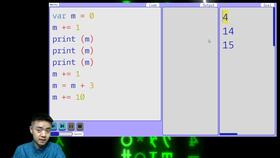
In the world of language and communication, accuracy is key. Describing objects, especially in a foreign language like English, can sometimes be challenging. One such object that might seem simple but requires precise description is the “方块.” In this exploration, we will delve into how to accurately describe this shape in English.
The art of description begins with understanding the object itself. A “方块,” in its simplest form, is a geometric shape with six equal square faces. It is a three-dimensional figure that is common in various aspects of life, from architecture to board games. Understanding its characteristics will help us find the perfect English expression.
As we dive deeper, the first part of our journey starts with the essence of language and its flexibility.
Understanding the Shape: A Prelude to Description
Before we dive into the correct terminology, it’s important to understand that describing a “方块” goes beyond just the shape. It’s about the context, the purpose, and sometimes, the cultural nuances. For instance, in a mathematical context, the description might differ from a casual conversation.
In English, the description of a “方块” can vary based on several factors. The primary factor is the dimensionality. A “方块” is not just a flat shape; it’s a cube. Here’s how we can start unraveling the correct terminology.
The Middle Ground: The Core of the Description
The heart of our article lies in the middle section, where we will explore various ways to describe the “方块” in English.
The most common and accurate term for a “方块” is the cube. This is a straightforward, universally understood term in the English language. A cube is a three-dimensional figure with six identical square faces. Each face meets every other face at a 90-degree angle, creating a symmetrical and balanced shape.
However, the description doesn’t stop there. Depending on the context, you might want to use additional terms. For example:
- Square Prism: This term is often used in a mathematical or scientific context. It refers to a prism with a square base, which essentially describes a “方块.”
- Cube-shaped: This is an adjective form that can be used when describing objects that are not perfect cubes but resemble the shape of a “方块.”
In different cultures and languages, there might be variations. For instance, in a technical drawing or architectural context, you might hear terms like:
- Right parallelepiped: This is a more technical term, referring to a three-dimensional figure with opposite faces that are equal and parallel.
Going Beyond the Terminology: Practical Applications
To truly grasp the description, it’s important to see how the term “cube” is used in practical situations. For example:
- In architecture: When describing a building with a distinct “方块” shape, one might say, "The building is a modern marvel, featuring a sleek, cube-shaped design."
- In gaming: "The dice thrown on the table is a perfect cube, with each face numbered from one to six."
These examples show how the term cube is not just a description but also a way to convey the object’s purpose and design.
Conclusion Without Naming It
As we conclude our exploration, it’s clear that the accuracy of describing a “方块” in English hinges on understanding the object and its context. The term “cube” is versatile and widely accepted, making it the go-to choice for most situations. However, being aware of the context and the technical terms can enhance communication, especially in specialized fields.
The beauty of language lies in its ability to adapt and convey meaning with precision. By understanding the nuances of the “方块” and its various descriptions, we not only improve our language skills but also deepen our appreciation for the objects that surround us in our daily lives. Whether it’s in art, science, or casual conversation, the right words can make all the difference in how we perceive and interact with the world.







